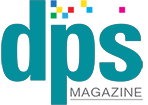Current Articles 371
Look to the Floor
Traditionally considered a wide format application, the increased interest in floor graphics for social distancing instructions and messaging has print providers with expertise in other areas—think flexography (flexo) and dry and liquid toner—asking how they can get involved.
Production Transparency
In today’s fast-paced world, production speed alone won’t give print providers an edge. The entire process, from order entry to kitting and mailing can be automatically driven by sophisticated workflow tools. In book manufacturing—where it is increasingly common to have smaller runs, down to a book of one—a streamlined operation really matters.
Over and Under
Primers, coatings, and over print varnishes (OPVs) are used pre- and post-print for function and haptics. In digital print environments, primers are utilized to optimize substrates for ink or toner while coatings are popular for direct mail, brochures, as well as labels and packaging to add protection or embellishments.
Your Trusted Web-to-Print Partner
Running a business without an online strategy is a rarity these days. In 2020, the absence of an online business presence...
Dscoop 2020: Take Two
Earlier this year, we were gearing up to kick off what should have been an epic trade show season. Spring events were expected to commence with Dscoop Edge 2020. However, this was derailed as the country locked down state by state due to the COVID-19 pandemic. Like all hardships, 2020 has forced individuals, businesses, and industries to be creative and resilient as we adjust to a new way of life.
Technical Printers for Today
The first part in this series on technical wide format printers looked at the latest trends, whether customers were appropriately using their devices...
Meeting Old and New Needs
Architecture, engineering, and construction (AEC), computer aided design (CAD), and geographic information system (GIS) is the traditional makeup of the technical document market...
Optimized Production
Finishing automation is increasingly important as print providers face a number of new challenges, including shorter, more complex work; faster turnaround expectations; and a reduced pool of skilled operators.
Essential Ecommerce
The storefront is a critical element of many web-to-print (W2P) solutions, which is further brought to light as the COVID-19 pandemic forces consumers and businesses alike to adapt the ways in which they do business.
Nationwide Label Production
As consumer expectations shift, the companies that serve them must also evolve. Brand owners increasingly demand high-quality labels with faster turnarounds. Further, they request shorter, more frequent runs. These needs are all met with digital printing equipment. Savvy label providers invest in digital printing and finishing equipment to ensure they never miss an opportunity.
Inkjet Proofing
In the print process, the proof is part of the contract between print provider and client. Therefore, it is essential that it is a controlled and accurate presentation of what to come. For digital and/or hybrid printing environments, inkjet proofing looks a little different than traditional processes.
A Quick Beat on Post Press
Post-press solutions are integral to the digital printing process. Varying configurations, including unwinders/rewinders, gluers/folders, inserters, binders, trimmers, and slitters are routinely required on the production floor—whether placed inline, near line, or offline. Trends in inkjet from personalization to achieving higher volumes are major influences on the newest generation of post-print equipment.
Channel Access
News
04.21.2025 Roland DGA Corporation, a leading provider of large format...
04.21.2025 Amplify is where print and packaging designers, commercial ...
04.17.2025 Roland DG Corporation, a leading manufacturer of wide-format ...
04.16.2025 Canon U.S.A., Inc., a leader in digital imaging solutions...
04.16.2025 General Formulations, a leading global manufacturer of pressure-sensitive...
Web Exclusive
Print a automation is essential to profitability and productivity...
Digitally printed labels make up a small, but growing segment of the overall market...
Magnetic signage is useful for promotional reasons, but it’s also fun to work with the medium as a design aesthetic.
Web to print (W2P) bring many advantages to a variety of print environments. Depending on the focus of the provider, certain features and functions are more essential.
Web to print (W2P) tools help expand a print provider’s reach outside of the local area, improve productivity of standard products, and improve client relationships.



